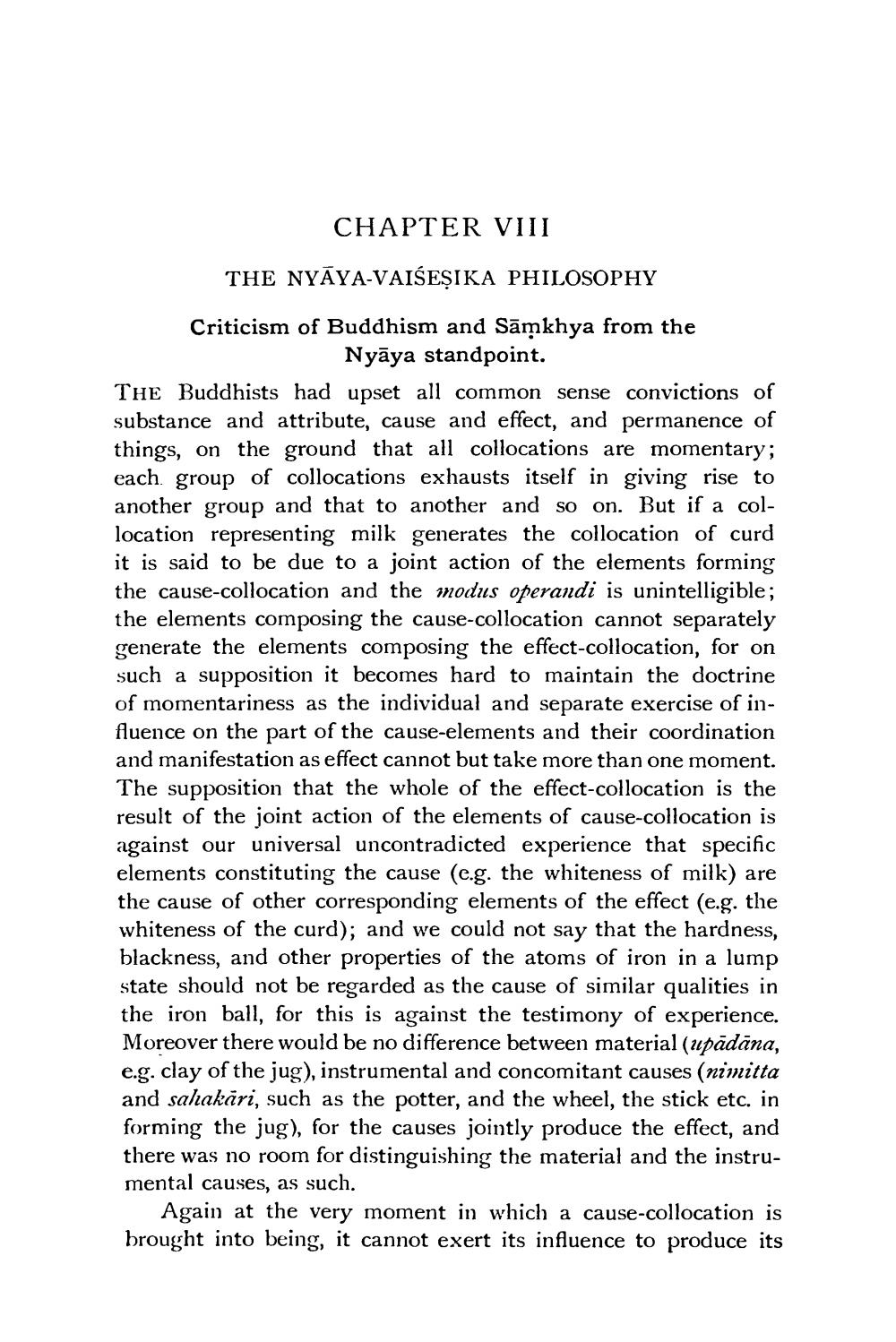________________
CHAPTER VIII
THE NYAYA-VAISEȘIKA PHILOSOPHY Criticism of Buddhism and Sāmkhya from the
Nyāya standpoint. THE Buddhists had upset all common sense convictions of substance and attribute, cause and effect, and permanence of things, on the ground that all collocations are momentary; each group of collocations exhausts itself in giving rise to another group and that to another and so on. But if a collocation representing milk generates the collocation of curd it is said to be due to a joint action of the elements forming the cause-collocation and the modus operandi is unintelligible; the elements composing the cause-collocation cannot separately generate the elements composing the effect-collocation, for on such a supposition it becomes hard to maintain the doctrine of momentariness as the individual and separate exercise of influence on the part of the cause-elements and their coordination and manifestation as effect cannot but take more than one moment. The supposition that the whole of the effect-collocation is the result of the joint action of the elements of cause-collocation is against our universal uncontradicted experience that specific elements constituting the cause (e.g. the whiteness of milk) are the cause of other corresponding elements of the effect (e.g. the whiteness of the curd); and we could not say that the hardness, blackness, and other properties of the atoms of iron in a lump state should not be regarded as the cause of similar qualities in the iron ball, for this is against the testimony of experience. Moreover there would be no difference between material (upādāna, e.g. clay of the jug), instrumental and concomitant causes (nimitta and sahakāri, such as the potter, and the wheel, the stick etc. in forming the jug), for the causes jointly produce the effect, and there was no room for distinguishing the material and the instrumental causes, as such.
Again at the very moment in which a cause-collocation is brought into being, it cannot exert its influence to produce its




